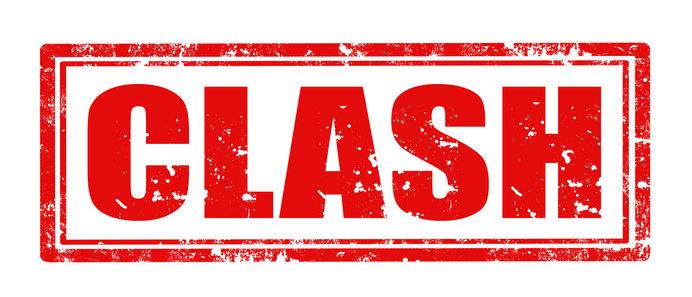When is a “Clash” a positive thing? Your first response would likely be never, and most likely everyone would agree that conflicts and clashes are not a positive thing.
In construction, the term Clash is used to refer to design interferences found between various building system components in our project buildings that will cause installation issues in the field when trades are installing their systems during a project.
As buildings get more complex and the designs add considerable architectural features while attempting to minimize cost resulting in less space to install the infrastructure inside the building, we find more and more project system clashes. This dichotomy of project goals typically results in a multitude of clashes between our structural components, mechanical, electrical and fire protection systems that aren’t always identified by the design professionals. Clashes of this type are found on most projects and if not dealt with before mobilizing to build the project, will result in a costly loss of time and rework in the field with additional costs to everyone on the project.
So how can we turn this type of “Clash” into a positive thing for our construction projects and our owners?
Early Detection and early correction are the keys to making Clashes good for our projects and our owners.
The Douglas Company employs a couple of processes to identify and deal with Clashes that we can offer our owners as a value-added service on each of our projects. These include our process called Design/Check which is a complete drawing and specification review and trade by trade overview to identify clashes and design mismatches within a project. The clashes and design issues found within the project plans are identified before starting construction and provided to the project architect and engineers to resolve and modify the plans accordingly. The second process which can be employed, but comes with an additional cost, is BIM modeling. BIM modeling should be considered on more complex projects with limited spaces available to install MEP systems in. BIM modeling goes a step further than Design/Check by the development of individual 3D models of every MEP and structural component within the building to confirm what systems are designed to be installed within the building space and to confirm where clashes exist amongst those components of the design. The cost implication mentioned earlier is the cost for the models to be designed and developed by the various trade contractors who will be installing their components in the project and the coordination and modifications found and needed to eliminate any clashes discovered in the project design.
These clash identification systems are most effective when applied early and with the involvement of the MEP trades and the architect to assist with the identification and removal of clashes found in the building design. The key to success is an early application of Design/Check or BIM modeling or both. How early is soon enough? The answer to that question lies with how many clashes exist in the project as designed and how flexible the team can be in finding and implementing solutions to the clashes. Every project can benefit from early identification and resolution which needs to occur prior to fabrication and mobilization on site. Early clash detection will save everyone on the project including our owners, time and money as clashes in the field are always more time consuming and costly to resolve.
So, to respond to the initial question raised, “when is a Clash a positive thing”? The answer is; early in the project when it can be resolved on paper and when more flexibility exists for everyone.
The Douglas Company provides to all of our clients on each project, our in-house Design/Check process and the benefits derived from this early Clash detection. By providing this early to our owners, we hope to make Clashes the positive experience they should be and we can deliver on one of our Brand Promises of “Limiting Surprises” to our clients and projects.
Peter Douglas, P.E.
President
The Douglas Company

